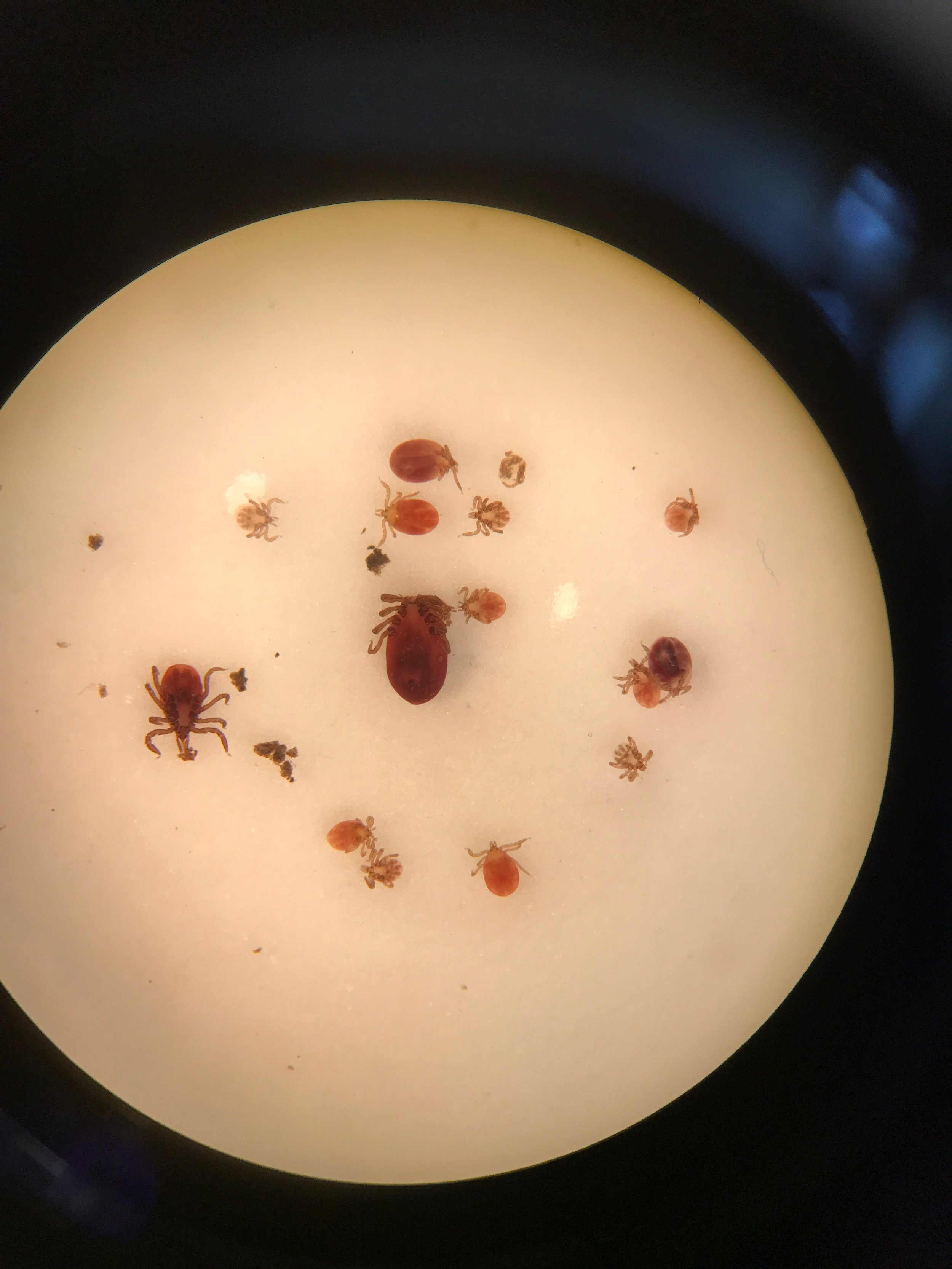Prescribed fire and tick-borne disease ecology
Prescribed fire is potentially an effective management tool to reduce free living tick populations and associated risks of tick-borne diseases. Tick populations may respond differently to prescribed fire depending on habitat, seasonal timing, and frequency. Furthermore, fire likely has varying effects on different tick and vertebrate host species, with implications for determining overall tick-borne disease risk. In this long-term experimental study, we aim to characterize how tick populations are affected by fire and to disentangle mechanisms underlying tick population and pathogen dynamics. Using a combination of field experiments and mathematical modeling approaches, we will gain a holistic understanding of how prescribed fire affects tick-borne disease ecology through its many components.
How does prescribed fire affect the abundance of host-seeking lone star ticks in oak-hickory forests? While burning has been shown to reduce tick populations in the short-term, within six months to one-year post-burn tick populations often rebound to pre-burn levels or exceed pre-burn levels (Hoch et al. 1972, Jacobson and Hurst 1979, Drew et al. 1985, Mather et al. 1993, Davidson et al. 1994,Stafford et al. 1998, Cully 1999, Allan 2009). Designing effective burn regimes requires an understanding of the mechanisms behind tick reductions and recoveries following burns. We are using a large carbon dioxide-baited trapping array spread across 16 paired burned and unburned plots to estimate lone star tick (Amblyomma americanum) larval, nymphal, and adult abundance, before and after prescribed fire. Collaborators: Kim Medley, Beth Biro, Katie Westby, and Jonathan Myers
Undergraduate fellow anirudh gandhi baits a carbon dioxide trap to collect host-seeking lone star ticks.
CLose-up view of a carbon dioxide baited trap with double sided carpet tape around the base
How does fire influence the interactions among birds, ticks, and associated pathogens? Birds play an important role in the enzootic transmission cycles of tick-borne pathogens as either dilution or amplification hosts. Understanding how prescribed burns affect the prevalence of tick-borne pathogens requires information on how burns influence interactions between hosts and ticks. In this study, we are comparing how both bird and tick community structure varies with burning. To understand how bird community structure is affected by fire, we are collaborating with Greg Shriver (University of Delaware) and Tess Rogers (World Bird Sanctuary). We find a different diversity of tick species parasitizing birds -compared to those captured in carbon dioxide traps-, and these ticks may be more or less susceptible to the effects of prescribed fire. We are working with collaborators Letícia Soares (University of Western Ontario), William Nicholson (CDC), and Bessie Lockwood (CDC) to test tick and bird samples for disease-causing pathogens.
sample of Ixodes ticks (larvae and nymphs) removed from passerine birds
engorged tick on the head of a Carolina wren
Land management effects on microbiome diversity in ticks. There is increasing evidence for the role of specific microbes in determining tick survival and ability to transmit disease. How the complete microbiome affects ticks’ acquisition, survival, and transmission of pathogens remains poorly understood. Moreover, little is known about the extent of host-associated microbial diversity and the environmental factors that determine microbiome composition. In particular, fire is a natural process in many ecosystems, and prescribed fire is increasingly being used as a land management tool. Fire can affect diversity within and among communities, likely including microbiomes. Here, we will characterize the microbiomes of local ticks and test how land prescribed fire affects the structure of tick microbiomes. Results from this project will contribute to ecological theory on disturbance and biodiversity relationships and lay the foundation for future research with applications for both ecological restoration and human health. Collaborators: David Wang, Adrianus Boon, Kim Medley, Beth Biro, Katie Westby, and Jonathan Myers. Funding: Seed Grant from the Living Earth Collaborative
part of a lone star tick (Amblyomma americanum) egg mass
field-collected lone star tick (A. americanum) adults, credit: leslie sterling







